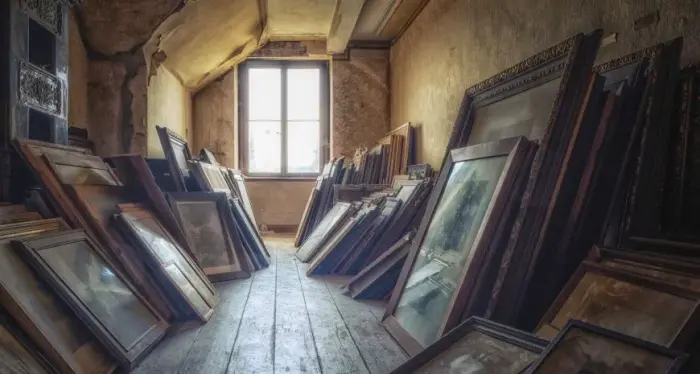Oil paintings are more than just decorations; they are tangible pieces of history, culture, and personal expression. Their intricate details, vibrant colors, and rich textures can endure for centuries if properly cared for. However, a wide range of well-intentioned but ultimately harmful practices can lead to irreversible damage. This comprehensive article outlines crucial “don’ts” to ensure your oil paintings remain in pristine condition, covering everything from creation (how to oil painting on canvas) to long-term preservation.

Storage Strategies: Tips for Oil Painting Preservation
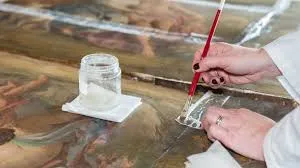
Improper storage is a leading cause of damage to oil paintings. Avoid these common mistakes:
- Don't store paintings in areas with extreme temperature fluctuations: Attics, basements, and garages are notorious for fluctuating temperatures and humidity levels. These fluctuations cause the canvas to expand and contract, leading to cracking, flaking paint, and even warping of the stretcher bars. A stable environment with a moderate temperature (around 70°F or 21°C) and relative humidity (around 50%) is ideal. These tips for oil painting storage are crucial.
- Don't lean paintings directly against each other without protection: This is a recipe for surface abrasions, scratches, and even paint transfer between canvases. Always use protective materials like acid-free paper, archival cardboard, or bubble wrap between stacked paintings. Ensure the protective material doesn't have a textured surface that could imprint on the paint.
- Don't store paintings face down on a flat surface: This can cause the paint surface to stick to the surface beneath, especially if the paint is not completely dried. It can also cause pressure damage, particularly to impasto (a thickly applied paint).
Handling with Care: Preventing Physical Damage to Oil Paintings
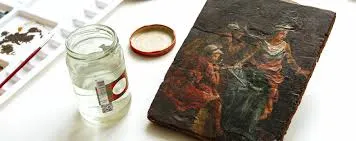
Physical damage can occur during handling and display. Be mindful of these handling practices:
- Don't touch the painted surface with your bare hands: Oils and dirt from your skin can transfer to the painting, attracting dust and potentially causing discoloration or even promoting mold growth over time. Always wear clean, lint-free cotton gloves when handling oil paintings, even for brief periods. Even a feather duster might cause damage to your paintwork.
- Don't use household cleaners on your oil paintings: Common household cleaners contain harsh chemicals that can dissolve or damage the paint layers, leading to irreversible damage. For artwork cleaning service or artwork cleaning, always consult with a professional conservator. They have the expertise and specialized materials to clean and maintain your artwork safely.
- Don't attempt artwork repair yourself unless you have professional training: DIY repairs, even seemingly simple ones, can often worsen the damage. Tears, punctures, or paint loss require the expertise of a trained conservator. They understand the complex layers of an oil painting and can use appropriate techniques for ethical and reversible repairs.
The Drying Process and Varnish: How to Dry an Oil Painting and Protect It
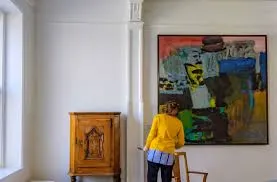
Understanding the properties of oil paint is essential for proper care:
- Don't rush the drying process: How to dry an oil painting correctly is a matter of patience. Oil paint dries through oxidation, not evaporation, a process that can take weeks, months, or even years depending on the thickness of the paint, the type of oil used, and the environmental conditions. Avoid placing freshly painted works in direct sunlight or using heat sources to speed up drying, as this can lead to cracking, wrinkling, or other surface defects. The oil painting underpainting technique can also influence drying times, with thicker underlayers requiring longer drying periods.
- Don't varnish a painting before it’s completely dry: Applying varnish too soon can trap solvents and prevent proper drying, leading to issues like clouding, blooming (a hazy film), or even cracking of the varnish layer. A general rule of thumb is to wait at least six months to a year, but it can be longer for impasto paintings.
- Don't expose paintings to direct sunlight for extended periods: UV rays from sunlight are a major cause of fading and discoloration of paint pigments. Display original paintings away from direct sunlight and consider using UV-filtering glass or acrylic in frames.
Cleaning and Maintenance: How to Clean an Oil Painting Safely and Effectively
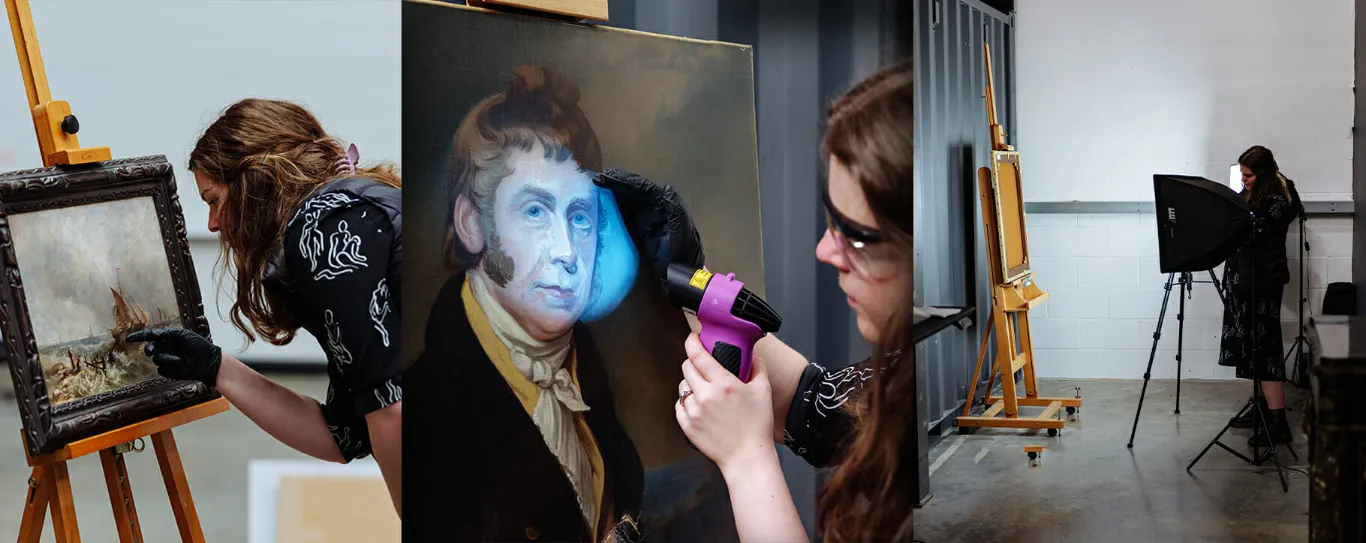
Proper cleaning is crucial for preserving the vibrancy of oil paintings, but it must be done with extreme caution:
- Don't use water or household cleaning products: These can damage the paint layers and the canvas. How to clean an oil painting safely requires specialized techniques and materials.
- Don't rub the surface vigorously: This can scratch the paint or cause it to flake. Gentle dusting with a soft, dry brush is the recommended routine cleaning method.
- Don’t ignore minor issues: Early intervention by a professional artwork cleaning service or artwork cleaning specialist can prevent minor problems from escalating into major and costly restoration projects.
The Art of Oil Painting: From Creation to Preservation

Understanding the techniques involved in painting with oils can inform preservation practices.
- Don’t neglect the support (canvas or panel): A high-quality, properly prepared support is essential for the longevity of an oil painting. Acid-free materials and proper sizing are crucial to prevent issues like canvas deterioration or cracking.
- Don't use low-quality materials: Inferior paints, mediums, and varnishes can deteriorate faster, requiring more frequent and potentially damaging restoration.
Practical Tips for Oil Painting Care
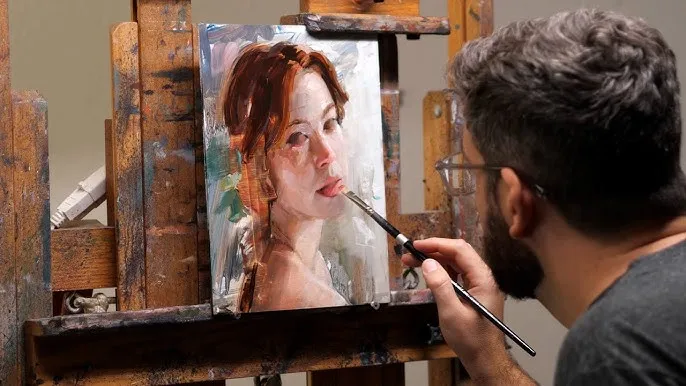
Here are some additional tips for oil painting care to reach our word count:
- Regularly dust your paintings with a soft, dry brush: A soft-bristled brush, like a makeup brush or a dedicated art dusting brush, is ideal for removing dust.
- Monitor the environment: Maintaining a stable environment is crucial. A hygrometer and a thermometer are used to monitor humidity levels and track temperature.
- Consider professional inspection: Periodic inspections by a qualified conservator are highly recommended, especially for valuable or historically significant works.
- Proper Framing: Framing not only enhances the aesthetic appeal of a painting but also provides physical protection. Use acid-free matting and backing boards to prevent damage from acidic materials.
By adhering to these guidelines, from understanding how to oil painting on canvas to proper long-term care, you can ensure your oil paintings remain beautiful and valuable for generations. If you have any concerns, consult a professional specializing in oil painting restoration.






